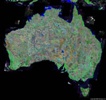 OK, perhaps I was exaggerating about foresters being happy. On day two of the government’s Emissions Trading Workshop in Christchurch last Friday the policy on pre-1990 forests was described as “blatant property theft
OK, perhaps I was exaggerating about foresters being happy. On day two of the government’s Emissions Trading Workshop in Christchurch last Friday the policy on pre-1990 forests was described as “blatant property theft
Tag: Hot
ETS workshop: day 1
 Just a note: enjoyable is perhaps not the best word for a day going through the detail of the framework for the NZ Emissions Trading Scheme (ETS), but it was certainly useful to have officials walk us through the design of the new system, and just as intriguing to gauge the response from the floor. To a first approximation, foresters happy, big emitters less so. Two key points. The ETS is clearly intended as a stepping stone to a long term system for post-Kyoto operation, but in the absence of any concrete guidance on where the world is going to go, much of the detail remains to be worked on. There are “2007 decisions
Just a note: enjoyable is perhaps not the best word for a day going through the detail of the framework for the NZ Emissions Trading Scheme (ETS), but it was certainly useful to have officials walk us through the design of the new system, and just as intriguing to gauge the response from the floor. To a first approximation, foresters happy, big emitters less so. Two key points. The ETS is clearly intended as a stepping stone to a long term system for post-Kyoto operation, but in the absence of any concrete guidance on where the world is going to go, much of the detail remains to be worked on. There are “2007 decisions
ETS reaction #2
 Two very perceptive pieces of analysis over the last few days,and one deeply misguided one. Rod Oram in the Sunday Star Times takes a look at how nitrification inhibitors could be a major incentive for dairy farmers to get involved in emissions reductions sooner rather than later, and Colin James in the Herald rather gloomily acknowledges the realpolitik of international negotiations:
Two very perceptive pieces of analysis over the last few days,and one deeply misguided one. Rod Oram in the Sunday Star Times takes a look at how nitrification inhibitors could be a major incentive for dairy farmers to get involved in emissions reductions sooner rather than later, and Colin James in the Herald rather gloomily acknowledges the realpolitik of international negotiations:
The odds are that humanity doesn’t think it matters, at least not enough to forgo significant amounts of its material gains or prospects. The odds are that humanity won’t really change its mind until (or if) climate change starts to have effects that cut significantly into material gains and prospects, the necessaries and luxuries of life, and people see it as the cause: that is, when it ceases to be a moral issue and becomes an economic one. That point has not been reached. So world politicians are likely to come up with a suboptimal arrangement to apply when the Kyoto Protocol ends in 2012 and to implement it suboptimally. And so, if the climate change high priests’ measurements and predictions are right and warming isn’t offset by radical new technologies, there is a rough ride ahead.
On the other hand, Roger Kerr of the Business Roundtable in the Dominion Post, grudgingly admits that the ETS looks “responsible and moderate
Biofuels to fly, and other stories
 Air New Zealand is carefully positioning itself as a climate-friendly airline with its latest announcement that it is to trial biofuels in a 747 flight from Auckland in the next couple of years. Working with Boeing, Air NZ will be part of the first commercial trial of biofuel, in a Rolls-Royce-powered jumbo in the next 18 months . The flight will only use biofuel in one engine, and will not carry customers. [Stuff, Herald, BBC, June HT blog on aviation biofuels].
Air New Zealand is carefully positioning itself as a climate-friendly airline with its latest announcement that it is to trial biofuels in a 747 flight from Auckland in the next couple of years. Working with Boeing, Air NZ will be part of the first commercial trial of biofuel, in a Rolls-Royce-powered jumbo in the next 18 months . The flight will only use biofuel in one engine, and will not carry customers. [Stuff, Herald, BBC, June HT blog on aviation biofuels].
- Consents are close on a tidal energy trial in the Cook Strait, while Orkney is establishing itself as European leader for tidal and wave power research.
- The NSIDC provides a roundup on this season’s Arctic sea ice collapse, while NASA finds that the loss of multi-year ice plays a large role in ice loss, and warns that sea ice modelling needs some rapid revision. Meanwhile James Hansen suggests to Reuters that a crucial trigger point may have been passed in the Arctic, and a perceptive journalist on the San Diego Union-Tribune notices that loss of sea ice has big implications for the SW USA. [Update 3/10: Andy Revkin has a very good piece in today’s New York Times: the interactive graphic of the Arctic is especially good.]
- A warming world is bad news for rice production, the Indian Agricultural Research Institute has found. Crop yields would be reduced by 10% for every 1ºC temperature increase during the growing season.
- British PM Gordon Brown and Helen Clark have agreed to work together to ensure that the NZ and European carbon markets are “compatible
Aussie forecast: drier and hotter
 Australians are going to have to come to terms with climate commitment. They face a rise in average temperature of 1ºC by 2030, and a significant increase in drought. The latest research on Australia’s future climate (Climate Change in Australia [PDFs here], by CSIRO and the Bureau of Meteorology) was released yesterday at the Greenhouse 2007 conference in Sydney. According to one of the authors, CSIRO scientist Dr Penny Whetton:
Australians are going to have to come to terms with climate commitment. They face a rise in average temperature of 1ºC by 2030, and a significant increase in drought. The latest research on Australia’s future climate (Climate Change in Australia [PDFs here], by CSIRO and the Bureau of Meteorology) was released yesterday at the Greenhouse 2007 conference in Sydney. According to one of the authors, CSIRO scientist Dr Penny Whetton:
“The probability of warming exceeding 1°C is 10-20 per cent for coastal areas and more than 50 per cent for inland regions.
